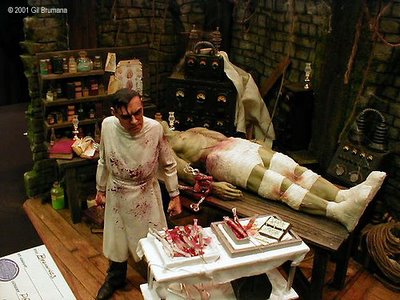"Bitch- A feminist response to pop culture"
Notes on the article "Beyond the valley of the geeks", and the website "Women Gamers".
Gender and gaming:
Its a stereotype, but its based on truth: Despite increasing numbers of female players and women working in game development, electronic games are still largely made for men, by men. Of the 145 million people that play video games, 43 percent are female. When it comes to console games, which dominate industry sales, only a quarter of the players are women. Women do however, make up 60 percent of the 6.3 million purchasers of games played on mobile phones.
US gaming companies are reluctant to disclose their percentage of female employees. But we do know that merely 10-15 percent of members of the international Game development Association are women. In the UK, just 17 percent of electronic gaming workers are female, and only 23 percent of those women have jobs that include designing or having creative input.
The reason this interests me from a designing point of view is that as we are designing an educational tool, it cannot be gender specific. One of the main aims is to create a game which not only educates, but also enjoyed from a purely non-educational way. I've realised that this might be hard. Girls in this case, might not be as interested to play as the boys. Research has shown that girls tend to choose games with short play and quick rewards, rather then Byzantine universes that require months to learn to navigate. One game to look at though which has been successful with women is The Sims created by a 60 percent female team and played by an audience that is 50 percent female. This seems to suggest that as women we are simple creatures purely wanting quick gratification and a pat on the back every five minutes.....
I think the way forward will be in the characters and also what platform the game should be played on. Could have a sims type character (obviously not to be made by me..) and a reward scheme. On her blog, Frag Doll team member (Female game team) Jinx writes:
"Within certain boundaries of reason, I think no one can argue that attractive game characters are awesome. Outside those bounds, well I often find myself cocking my head and wondering how physics engines can support the paradoxes of some female models... Usually there's an inverse relationship between the size of a character's breasts and her character development.... Developers, I'm trying to help you. If you're going to put a female character in the game, put her in for a reason... Being buxom is not a reason, it is an excuse."
As the characters in my game will be the character in the film that they are looking at I do not feel that it is important to look to closely at character assassination! However, the importance of female characters' physical appearance to female gamers is not well understood by male game developers. Perhaps this has something to do with the fact that identifying with game characters is less important to many male gamers? Male gamers see that most male characters are portrayed as unrealistic, muscle-bound Rambo-types, but they simply are not that affected by this. Many female gamers, on the other hand, are irritated when they can not identify with their female character. Additionally, males seem to miss the significance of the fact that female characters are not simply portrayed in a physically unrealistic manner, but are overly sexualised as well. As Sheri Graner Ray of Sirenia Software pointed out, male characters' sexual organs are not exaggerated in the same way as female characters' sexual characteristics are exaggerated-we do not see male game characters with huge penises, for example.
This next part is not really in contrast to my own problem or concerns as far as "Mr Benn for a modern world" goes but is rather interesting! In "Strong=Sexy," an essay published by WomenGamers.com, game critic Damon Brown muses on what male gamers get out of manipulating virtual vixens. His argument seems to vaguely state that this sexing up of women is about power differentials and has something to do with men's "phobias, desires and repression". He then goes on to say that male lead characters- Rambo, Bond, etc,- offer the player the chance to experience power by killing. Then he tries to establish a parallel by attempting to figure out what kind of power female leads proffer to male game players.......: "Man will never be able to stop his fascination of the womb, the place from where he came.... Women have this power. He does not." By this power I presume he means the ability to give birth. He reasons that male characters allow players to have power over others by killing them, and female characters allow players to have power over others by..... having babies??? He does slightly redeam himself by going down the path of : There's a difference between what male and female characters, as currently constructed, offer players, and it does have to do with power. What these female characters offer to the largest market share of game players- heterosexual men- is the chance to be aroused while going about the business of destroying bad guys or stealing cars. What more could a man want.....?
It has been suggested and I'm not utterly convinced, however that it is the "male geeks" who create them, that makes the medium prone to characterising women as sexual objects. " Many of the heterosexual geek boys in this industry have a deep resentment of women because they haven't had as much access to women as they would like." Therefore they can skip asking a women to go on a date and just create a character instead.... I dread to think what these people have created in their bedrooms....



